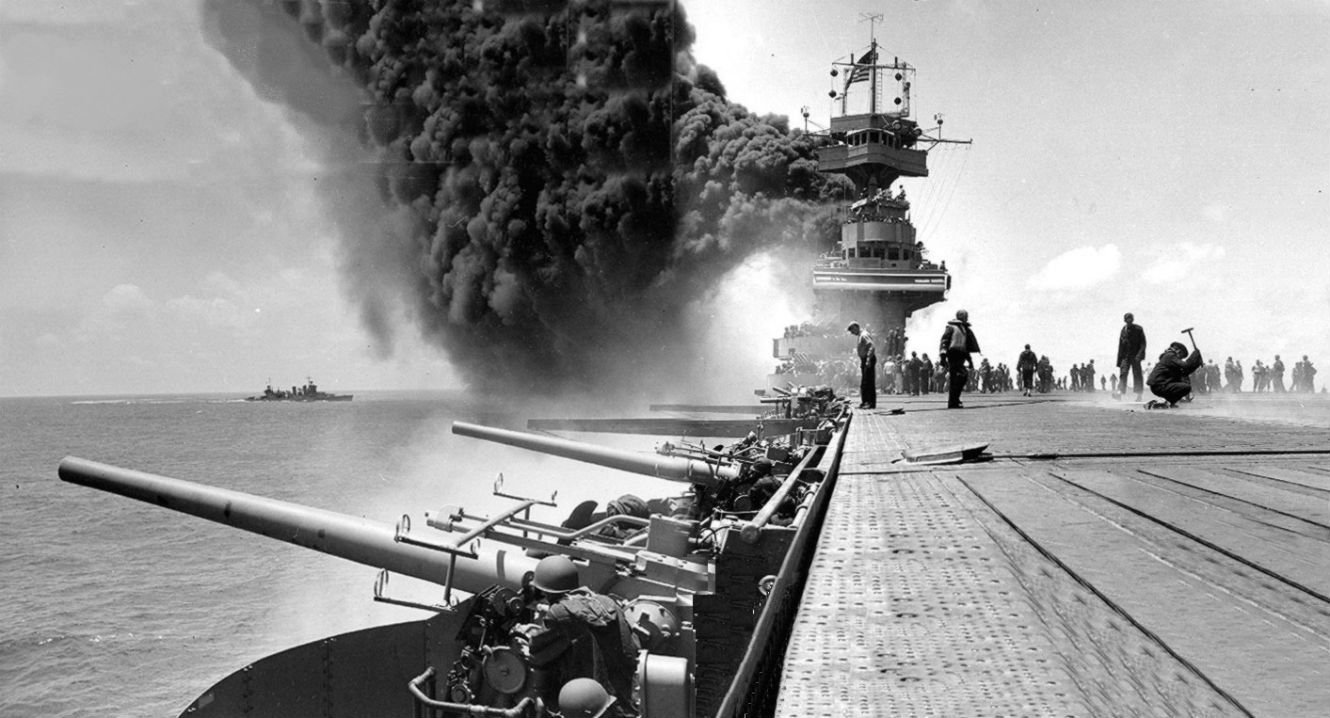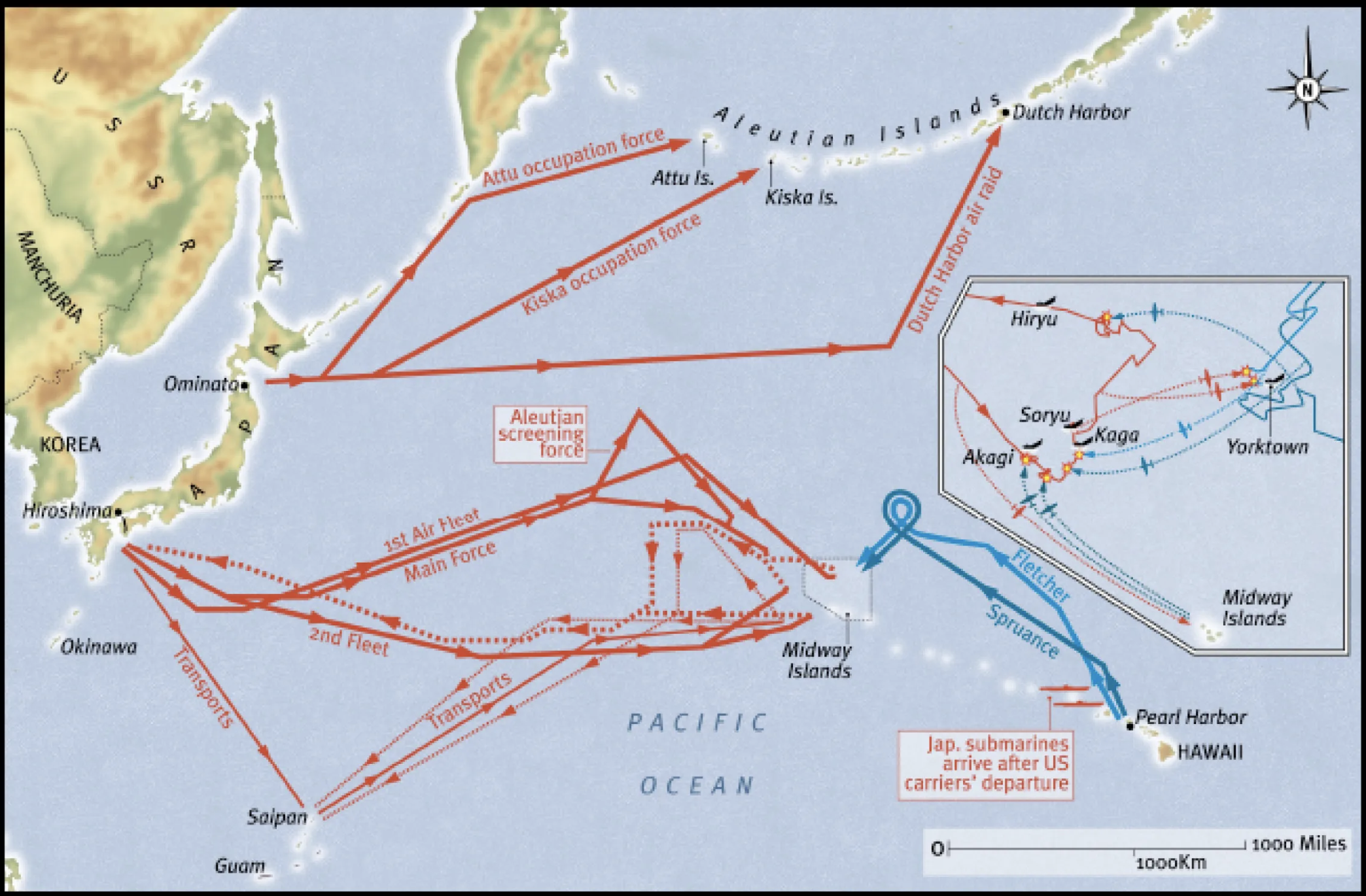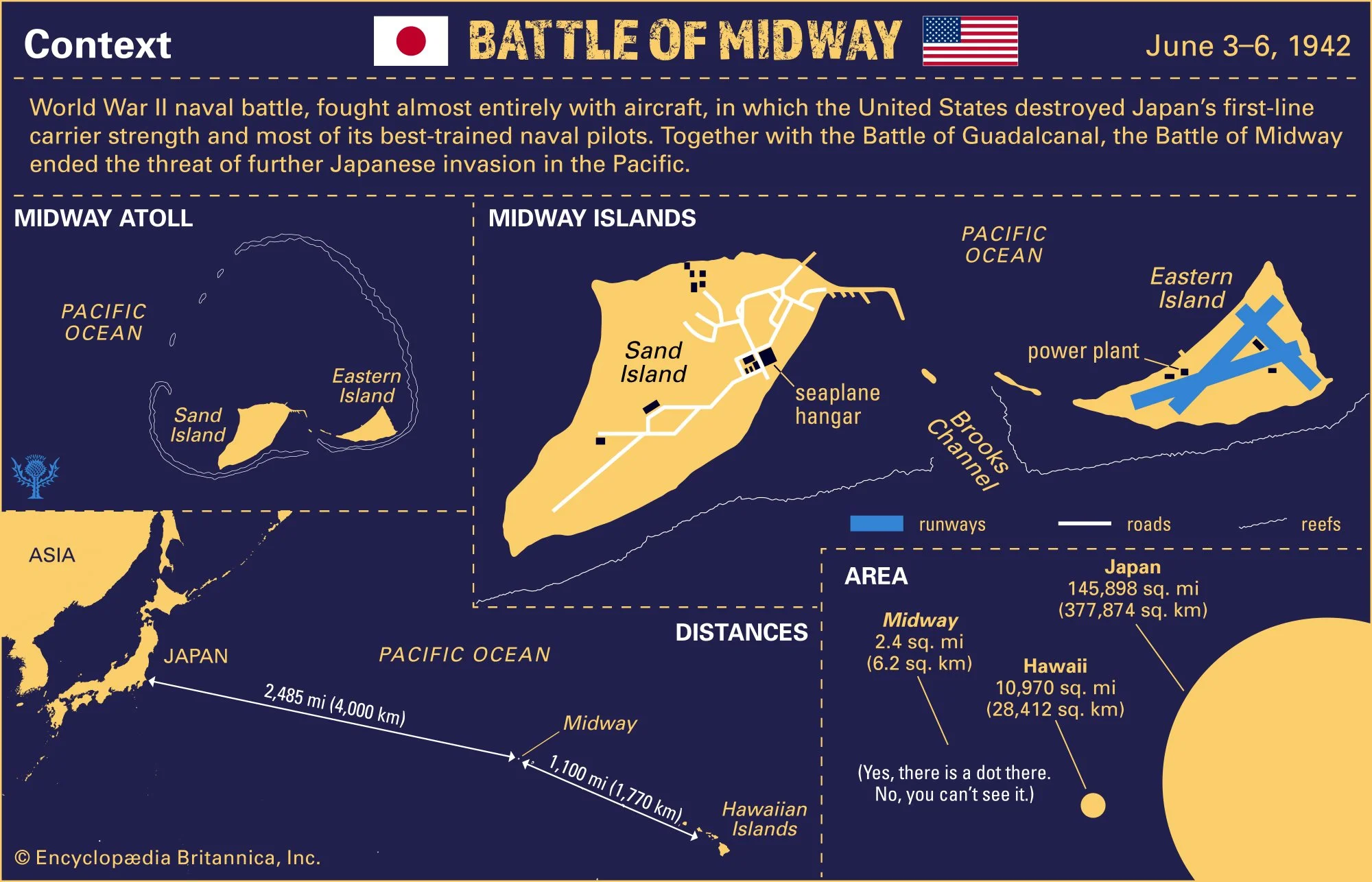Shattered Sword by Parshall
Ref: Parshall (2007). Shattered Swords: The Untold Story of the Battle of Midway. Potomac Books.
______________________________________________________________________
Summary
The story of the WWII Battle of Midway
______________________________________________________________________
Japanese Strategy
The Japanese Army viewed any enlargement of the defensive perimeter as dangerous and unnecessary.
The Fundamental strategic conundrum that now faced the Japanese; ‘how to force to the negotiating table an enemy who, although wounded, was both vastly more powerful in the long term, and in the short term had demonstrated a furious disinclination to bargain?’
Shipping difficulties increased at a geometric rate in relation to the distance of the defensive perimeter from the home islands.
Potential Japanese Strategies
Go from offensive to defensive. Consolidate Gains. Toughen up its defensive shell and begin preparing for when America would counterattack
Occupy Australia. The Army argued that it would take a minimum of 10-12 divisions to execute this plan. Australia was just the sort of open-ended manpower sump that the Imperial Army wanted at all costs to avoid. It would create a theater of operations that was beyond the nation’s logistical capabilities.
Cut supply lines between Pearl Harbor and Australia. To do so, Japanese forces would advance into the New Hebrides, New Caledonia, Fiji, and Samoa.
An operation in the Central Pacific aimed at decisive battle on Japanese terms to guard Japan's seaward approaches in the North. Potentially as a jumping point for a future invasion of Hawaii.
Direct invasion of Hawaii would be used to precipitate a decisive battle with the Americans. A bit infeasible due to the logistical problem of supplying food, water, fuel from Japan to the islands.
Indian Ocean Operations including a Japanese move against the British in India.
Japanese Failures
For all of Yamamoto's defective planning- his obsession with concealment and deception, shotgun approach to objectives, frivolous distribution of assets, and rigid timetable- his operational scheme could probably still have been made good so long as he retained his final trump card: a fully constituted Kido Butai, with all six of its fleet carriers. Yamamoto should have realized that there were, in fact, precisely two types of objectives in the Pacific- those that were worth attacking with all six of Japan's fleet carriers, and those worth attacking with none. Until the enemy's carriers were destroyed, there was no middle ground on this matter.
The Japanese needed to recognize that their real problem was not one of resource allocation between multiple objectives, but rather scheduling multiple operations, around a single, finite resource.
The IJN was attempting too much in too many places, and with too few assets.
______________________________________________________________________
Aircraft Carriers
Yamamoto's triumph at Pearl Harbor had demonstrated unequivocally to his enemies the total vulnerability of such forces in the face of modern airpower.
The battleship was no longer a weapon of decision; Aircraft Carriers were increasingly used for power projection and submarines for destruction of enemy shipping.
The preservation and augmentation of its carriers, and the destruction of the enemy's, were the overriding goals of the US Navy, from the time the smoke cleared over Pearl Harbor.
______________________________________________________________________
Pearl Harbor
It was believed that a single attack would be sufficient to destroy the American airbase and its aircraft.
Yamamoto's triumph at Pearl Harbor had demonstrated unequivocally to his enemies the total vulnerability of such forces in the face of modern airpower.
______________________________________________________________________
Midway
Midway was a tiny atoll, composed of two islands, Sand and Eastern, surrounded by a coral reef.
To support US ground troops, it would also be necessary to defend the communications lines to Australia. This meant that several important island groups- including the Fijis, New Caledonia, and Samoa- would need to be fortified more strongly.
This American pinprick had the effect of cementing the strategic debate in favor of Yamamoto and winning the Army over regarding operations in the Central Pacific.
Yamamoto had achieved his goal- operations in the Central pacific aimed at the destruction of the American fleet and the subsequent capture of Hawaii.
______________________________________________________________________
Misc Quotes
A commander’s job is to orchestrate and direct the three major dimensions of combat- space, time, and force. Yamamoto's plan failed to address the concept of space in a flexible manner. In his attempt to be "divinely mysterious”, he had rendered much of his fleet purposeless through dispersion.
______________________________________________________________________
Chronology
18 Apr, 1942: The Doolittle Raid on Tokyo; the Japanese are forced to push the defensive barrier out to Midway to deter future American raids on Tokyo and the home islands.-Shattered Sword by Parshall.
13 Mar, 1942: The Japanese military ratifies operations against Fiji and Samoa to cut the SLOCs between the US and Australia.-Shattered Sword by Parshall.
______________________________________________________________________



